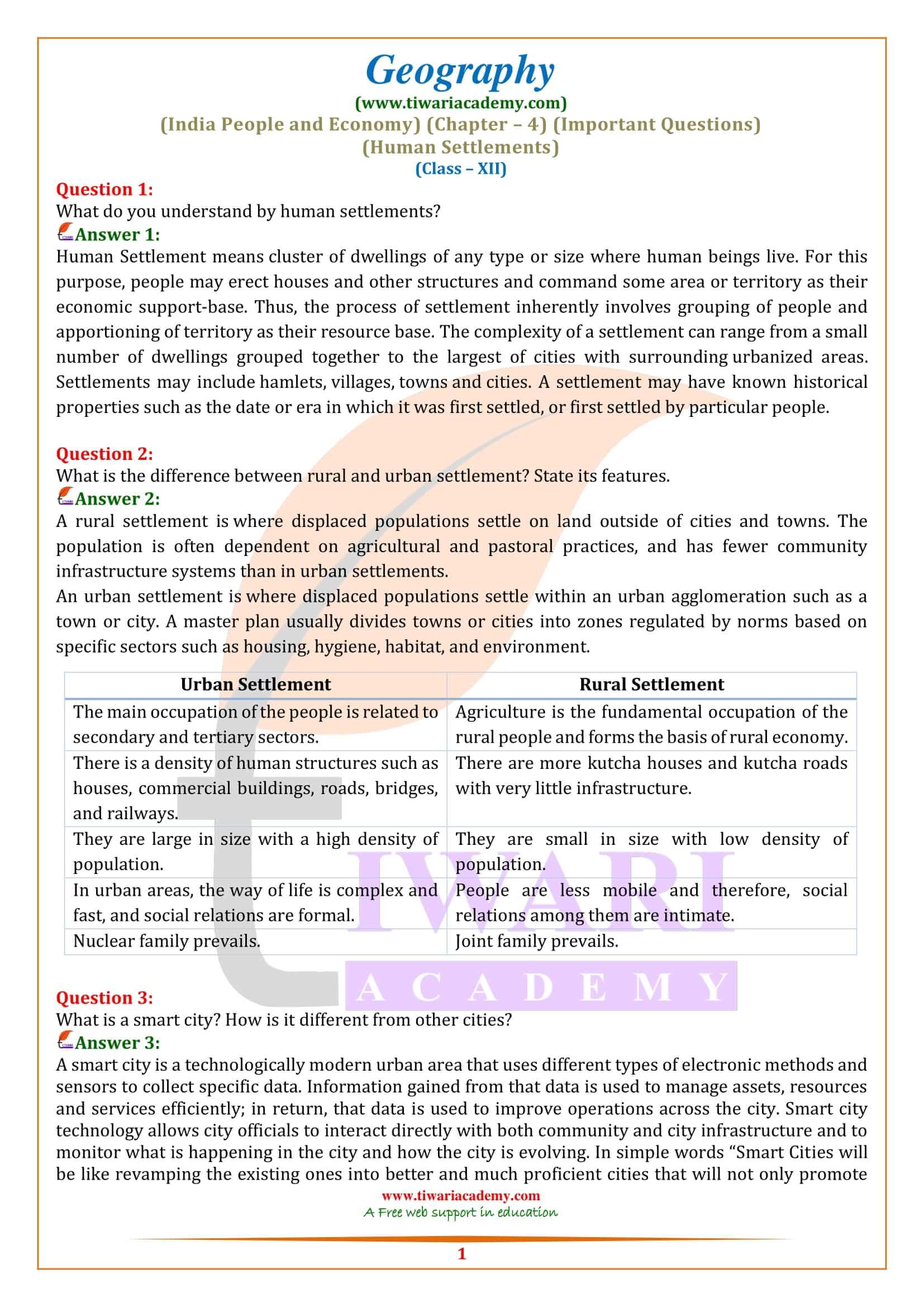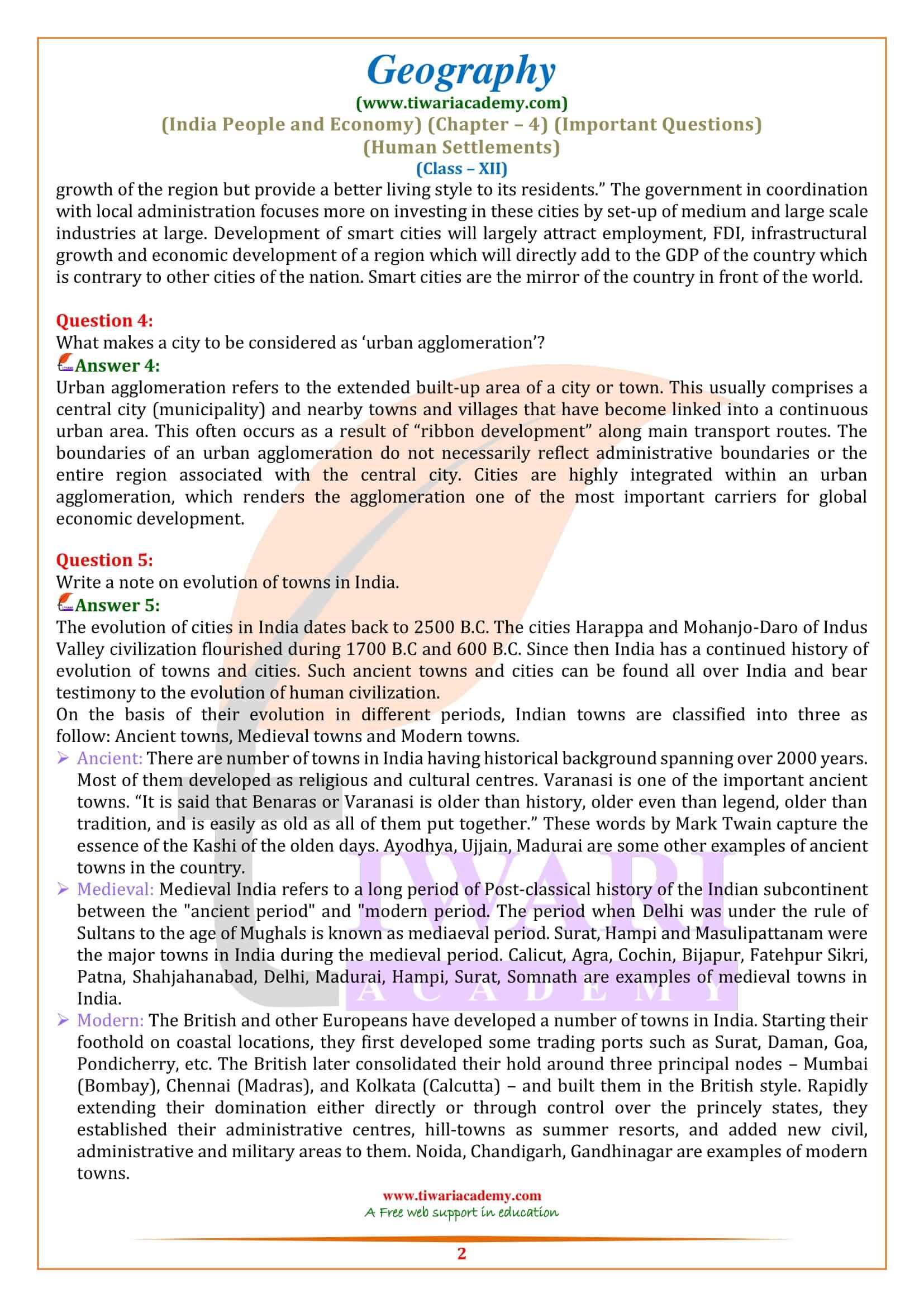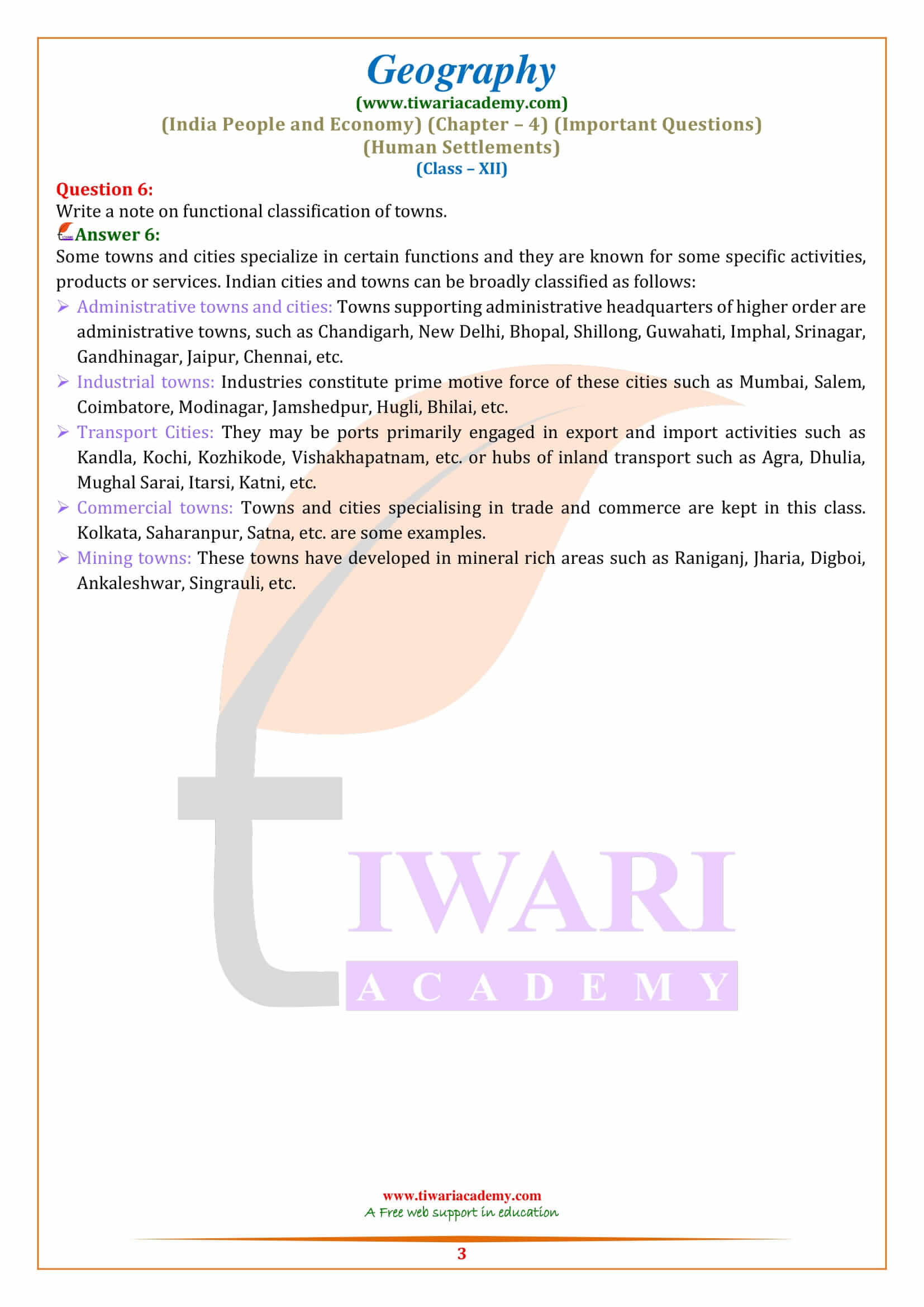Class 12 Geography Part 2 Chapter 4 Important Questions of Human Settlements with complete explanation of terms and exercises. Class 12 Geography chapter 4 extra question answers are divided into short and long answer type questions and confined to part 2 India People and Economy textbook.
Class 12 Geography Chapter 4 Important Questions
Class 12 Geography Chapter 4 Important Extra Question Answers
What do you understand by human settlements?
Human Settlement means cluster of dwellings of any type or size where human beings live. For this purpose, people may erect houses and other structures and command some area or territory as their economic support-base. Thus, the process of settlement inherently involves grouping of people and apportioning of territory as their resource base.
The complexity of a settlement can range from a small number of dwellings grouped together to the largest of cities with surrounding urbanized areas. Settlements may include hamlets, villages, towns and cities. A settlement may have known historical properties such as the date or era in which it was first settled, or first settled by particular people.
What is a smart city? How is it different from other cities?
A smart city is a technologically modern urban area that uses different types of electronic methods and sensors to collect specific data. Information gained from that data is used to manage assets, resources and services efficiently; in return, that data is used to improve operations across the city.
Smart city technology allows city officials to interact directly with both community and city infrastructure and to monitor what is happening in the city and how the city is evolving. In simple words “Smart Cities will be like revamping the existing ones into better and much proficient cities that will not only promote growth of the region but provide a better living style to its residents.”
The government in coordination with local administration focuses more on investing in these cities by set-up of medium and large scale industries at large. Development of smart cities will largely attract employment, FDI, infrastructural growth and economic development of a region which will directly add to the GDP of the country which is contrary to other cities of the nation. Smart cities are the mirror of the country in front of the world.
What makes a city to be considered as ‘urban agglomeration’?
Urban agglomeration refers to the extended built-up area of a city or town. This usually comprises a central city (municipality) and nearby towns and villages that have become linked into a continuous urban area. This often occurs as a result of “ribbon development” along main transport routes.
The boundaries of an urban agglomeration do not necessarily reflect administrative boundaries or the entire region associated with the central city. Cities are highly integrated within an urban agglomeration, which renders the agglomeration one of the most important carriers for global economic development.
Write a note on evolution of towns in India.
The evolution of cities in India dates back to 2500 B.C. The cities Harappa and Mohanjo-Daro of Indus Valley civilization flourished during 1700 B.C and 600 B.C. Since then India has a continued history of evolution of towns and cities. Such ancient towns and cities can be found all over India and bear testimony to the evolution of human civilization.
On the basis of their evolution in different periods, Indian towns are classified into three as follow: Ancient towns, Medieval towns and Modern towns.
Ancient: There are number of towns in India having historical background spanning over 2000 years. Most of them developed as religious and cultural centres. Varanasi is one of the important ancient towns. “It is said that Benaras or Varanasi is older than history, older even than legend, older than tradition, and is easily as old as all of them put together.” These words by Mark Twain capture the essence of the Kashi of the olden days. Ayodhya, Ujjain, Madurai are some other examples of ancient towns in the country.
Medieval: Medieval India refers to a long period of Post-classical history of the Indian subcontinent between the “ancient period” and “modern period. The period when Delhi was under the rule of Sultans to the age of Mughals is known as mediaeval period. Surat, Hampi and Masulipattanam were the major towns in India during the medieval period. Calicut, Agra, Cochin, Bijapur, Fatehpur Sikri, Patna, Shahjahanabad, Delhi, Madurai, Hampi, Surat, Somnath are examples of medieval towns in India.
Modern: The British and other Europeans have developed a number of towns in India. Starting their foothold on coastal locations, they first developed some trading ports such as Surat, Daman, Goa, Pondicherry, etc. The British later consolidated their hold around three principal nodes – Mumbai (Bombay), Chennai (Madras), and Kolkata (Calcutta) – and built them in the British style. Rapidly extending their domination either directly or through control over the princely states, they established their administrative centres, hill-towns as summer resorts, and added new civil, administrative and military areas to them. Noida, Chandigarh, Gandhinagar are examples of modern towns.





